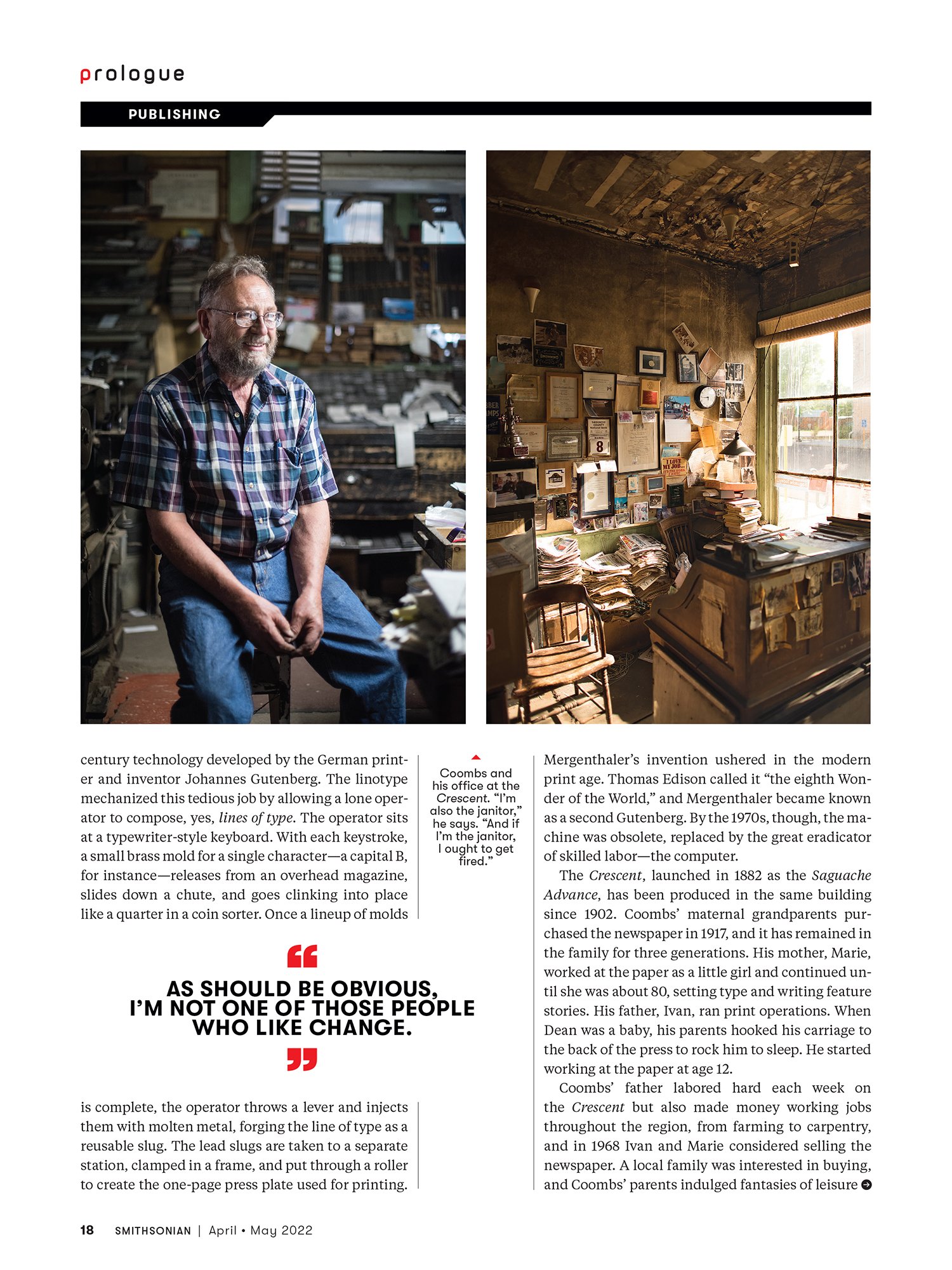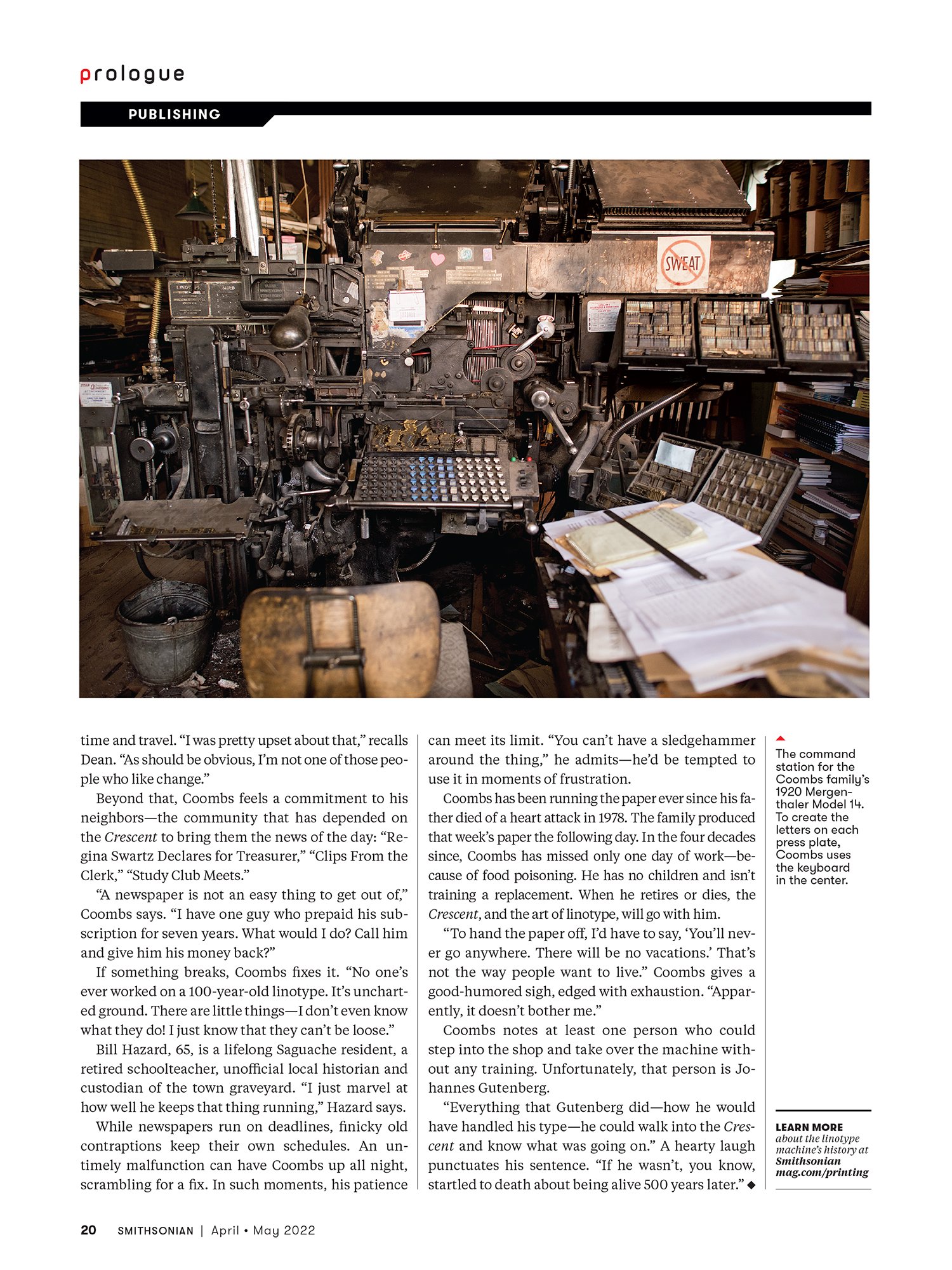The Saguache Crescent
Small Town Newspaper - American Culture - Publishing
If you’re not interested in hearing more talk about personal projects than skip this one. It will be a familiar topic forever though, so get used to it if you’re going to stick around. Shot these images back in July of 2019 during a road trip out to Colorado. There was a final destination in mind but the route was unplanned. One of the small towns that popped up along the way was Saguache, CO. And by small, I mean population 424 small. Driving down “Main St” I noticed a very peculiar yet unmarked storefront. Inside the front window was an unidentifiable machine that looked like it came from a different age. (Findings like this are one of the many romantic draws to small towns). The screen door was open so I went in and was greeted not by a person, but a space filled with unexplainable life. A monstrosity of metal, tools, and papers from front to back, but I couldn’t figure out what year it was or what it all meant. There was nobody inside so I tried the jewelry store next door hoping for an answer. Sitting calmly behind the counter was the man I later found out ran the business I had so many questions about. That business turned out to be the town newspaper, the last of it’s kind still being printed on a linotype machine. A what? A linotype machine. The industry standard before the invention of computers. Now they are dinosaurs. Dean was very lackadaisical toward my request to photograph him at work, but nevertheless we made plans to meet again after my 4th of July camping trip. So about 5 days later I was back in a town I had never previously heard of, working on a story about Dean Coombs and The Saguache Crescent. My two days with Dean and the town of Saguache was quite memorable. It all seemed like living in a time capsule. Life there happens in a bubble because Saguache has nothing to draw any tourists, so the only people you’ll ever see are locals. Learning about Dean’s process what both educational and humbling. The patience required by one person to put out a weekly newspaper on a linotype is unfathomable. Hats off to Dean and all the people around the world dedicated to similar tasks.
One morning at the local cafe I sat quietly at the bar waiting for a breakfast burrito that turned out to be the size of a piece of firewood. Haven’t found anything even close to that size since. But just as memorable was a 90 year old man in conversation with a friend, who picked up a jar of sugar and did a 10 second pour into his cup of coffee. Kinda threw all the science about health and longevity out the window.
A while after the trip an edit of images was put together and sent around to a few places and got picked up by The National. We were happy with the placement as The National is a very reputable/long running publication. Then Covid hit and everything went to shit. The piece needed a new home. We received warm feedback from a contact at National Geographic. She liked the photos/story even though it wasn’t a good fit and suggested we pitch it to the Smithsonian Magazine. So we did and 1.5 years later here we are. It can be hard waiting so long for a piece to find a home. The wait is well worth it though when that home winds up being The Smithsonian.
If someone handed me a billion dollars tomorrow I’d still be working on these type of projects. Telling stories about people like Dean and the last newspaper in the world being made on a linotype machine. I’m grateful for the opportunity to tell his story my own way and to collaborate with Nick Yetto on the writing. And to have a personal project end up at a place like the Smithsonian.
Long live the personal project!




